- Home
- L. Frank Baum
Wonderful Wizard of Oz (Barnes & Noble Classics Series) Page 3
Wonderful Wizard of Oz (Barnes & Noble Classics Series) Read online
Page 3
While the imaginative world of Oz bears a family resemblance to whole libraries of fantasy and adventure, it is hard to identify Baum’s principal influences. He so artfully sublimates his sources they seem sui generis, reminders of Eliot’s remark that bad writers borrow and good writers steal. Some, like the kind Stork, are elements that appear in all children’s literature, which features lots of talking animals—the noteworthy exception being Toto, who exemplifies that conundrum of children’s literature, the Goofy/Pluto Quandary—that is, why some animals speak and others do not, why Goofy has full command of the language and Pluto, Mickey’s dog, can only bark.19 Some elements of suggestive iconographic value, such as the Wicked Witch’s dread of water or the fact that her blood has all dried up, seem easily parsed. Others are less certain. The mark on Dorothy’s forehead left by the Good Witch of the North is talismanic, like Achilles’ unprotected heel or the more contemporary inheritor of the same idea, the lightning-bolt scar on Harry Potter’s brow. Does it also point to the mark made by offended deity to protect Cain from harm and to perpetuate his torment? When Odysseus visits Hell in book 11 of the Odyssey, the reason is to get directions home from Tiresias, and, similarly, Dorothy undertakes the trip to the Emerald City to ask the Wizard how to get back to Kansas. Yet Oz is no more Hades than Hades Oz. The bar of iron that the Witch places in the middle of her kitchen floor to trip up Dorothy half works—Dorothy trips and loses one of her Silver Shoes—but also inverts tradition: Bar iron is usually associated with warding off demons, not innocent little girls. The witch has a single cyclopean eye that announces a disturbing union of monstrosity and omniscience (and to some may point to Freemasonry’s single eye that appears on U.S. currency). In Greek myth, Hermes wears a cap of wings, and in Baum’s Oz Dorothy has a Golden Cap. The Winged Monkeys seem related to neutral instrumentalities of evil authority like the Harpies or Wagner’s Valkyrie, but neither of these antecedents is as reasonable or eloquent as Baum’s equivalents. 20 The apportionment of real estate in Oz is impressive, with the witches governing regions designated by the four cardinal points. But why did Baum assign positive moral values to north and south and negative to east and west—a literary fact, or accident, that Littlefield would use sixty-four years later when he advanced his famous reading of the book as a political allegory?21
Or, again, take those Silver Shoes. They seem to reach back to the Cinderella story but in a not entirely helpful way. Dorothy is not Cinderella—and not only because she is of less than marrying age. Dorothy’s home life is comfortable and happy; moreover, all Cinderellas, male or female, are sponsored by some natural agency that functions as a parent surrogate—a fairy godmother, a Mother Holle, the spectral grandmother of the Little Match Girl, or in derivatives like Flashdance or Rocky, as the protagonist’s aging female dance instructor or his grouchy fight trainer. Every Cinderella is special in the first place, a member of a natural aristocracy who has gone unrecognized by dog-and-cat humanity until Nature intervenes and teaches the world to see beauty with Nature’s eyes. This is children’s literature’s own law of natural selection, which states that no naturally gifted child must ever be forced to suffer for very long either social exploitation, social invisibility, or familial mar ginality. The Cinderella scenario hardly applies to Dorothy, who is special only after she is picked up and set down in Oz. She has a happy home, is only technically “homeless” while in Oz, and has two adoptive parents who love her. She is, moreover, a typical little girl from Kansas whose most precious gift is that she knows it. Her confinement in the castle of the Wicked Witch seems an analogue to Cinderella’s situation, but Dorothy does little work and spends part of her time in bitter tears. Each invocation of possible precedent only introduces more alienating distance. Scattered throughout the novel there are many such symbols that seem interpretive dead ends—the fact that white is the witch color, for instance, which inverts the anticipated hierarchy of color-coded values, or that, as we learn in chapter XII, the witch is afraid of the dark. The same is true of so many story elements that their appearances, rather than being iterations of some ancient property of fantastic literature, are really opportunities for Baum to empty them and then fill them with his own American content. Whence the continuing and probably endless parade of allegorical readings of the novel, from Henry Littlefield’s to Herblock’s famous 1939 cartoon, in which Hitler is cast as the Wicked Witch of the West and Mussolini one of the Flying Monkeys. Baum approached his sources like someone on a shopping spree rather than one conducting a calculated raid.
Perhaps this whimsicality also explains why certain apparently pregnant details lead nowhere, such as the man in the small house Dorothy and her companions stop at on the way to the Emerald City, who “had hurt his leg, and was lying on the couch in a corner” (pp. 94-95), the “seven passages and three flights of steps” (pp.104-105) through which Dorothy is led on the way to her room in the Palace, or the fact that the Wizard charges them to come to his Throne Room “at four minutes after nine o’clock” in the morning (p. 148). Was Baum preparing some role for the character with the bad leg that he either forgot about or failed to find a place for? Was one of his children, perhaps, born at 9:04 A.M.? Or are these details simply forgivable inconsistencies, like the behavior of the Tin Woodman, who is moved to tears when he accidentally steps on a bug yet slays a wildcat and forty wolves, or that Dorothy is suddenly found to be wearing a whistle “that she had always carried about her neck since the Queen of the Mice had given it to her” (p. 140), when, in fact, this never happened?
Baum’s use of colors is particularly intriguing. There were initially four witches, and by the end of chapter III only one bad one, the Witch of the West, is left. (Should we make anything of the fact that by her very arrival in Oz Dorothy instantly tips the balance in favor of the good and dresses in a frock of white, the witch color, and blue?) Green, the color of the Emerald City, has a persistently ambiguous value in literature, a two-headed semantic arrow that points in opposite or divergent directions. While it gestures to nature and to the appealing presence of natural forces, like nature itself it can possess a malign, counter-Wordsworthian aspect. In Gawain and the Green Knight, for instance, green is assigned to a figure who mingles both beauty and monstrosity, virtue and cruelty; in The Great Gatsby, green is the color of the inspirational light at the end of Daisy Buchanan’s dock and of the “death car” that kills Myrtle Wilson. But what does Baum’s selection of green represent?22 The same is true of blue, the Munchkin’s “favorite” color and the one “most frequently seen,” according to Biedermann, “as a symbol for things of the spirit and the intellect”—from the Virgin Mary’s mantle in stained glass windows to Veronica Sawyer’s outfits in Michael Lehmann’s Heathers (1989).23 Does Dorothy’s progression from a blue-dominated land to a “green” destination make some significant commentary on her journey, or is the relationship an accidental correlation? Leading the inexplicables is the name Oz itself.24 Baum, who as Hearn says was not the most careful writer, clearly had fun with his material—extemporizing from sources that may in the long run have been purely and hopelessly autobio graphical.
Unlike the Freudian dimensions that Alice finds at the bottom of the rabbit hole, all the dangers in Oz are external. And a general understanding prevails. When the Wicked Witch dispatches the Winged Monkeys she instructs them to destroy all except the Lion (“I have a mind to harness him like a horse, and make him work”) (p. 122), they successfully carry out her orders until they reach Dorothy:
The leader of the Winged Monkeys flew up to her, his long, hairy arms stretched out and his ugly face grinning terribly; but he saw the mark of the good Witch’s kiss upon her forehead and stopped short, motioning the others not to touch her.
“We dare not harm this little girl,” he said to them, “for she is protected by the Power of Good, and that is greater than the Power of Evil” (p. 123).
In Oz, and nearly everywhere in fantasy, this is the prime directive: Good is inevitably str
onger than evil. It informs Dorothy’s appeal to the Wizard and, prior to that, the behavior of the Stork, and it is one more reason, arguably the principal one, for the discomfort experienced by the first generation of fans of the book who were faced with a troubling ambiguity. Oz is a place where good dominates, but where you will also find that impossible contradiction, the good witch. This is by all evidence Frank Baum’s invention and arguably his lasting contribution to the representational vocabulary of Western literature. Nowhere do you find a good witch before Baum, who combines a traditional occult figure with the American progressive’s optimistic faith in human nature—what is nowadays termed, often disparagingly, secular humanism—and invents a whole new moral typology. The righteous who may be tempted to read J. K. Rowling understand the dilemma intimately. What good is it if the message is consonant with Christian morality but the vehicle is not? In the long run, Baum’s entrepreneurial approach to tradition echoed Whitman’s cry of “creeds and schools in abeyance”; like Whitman, Baum wanted to give America something completely new—the concept of “neutral magic,” of the occult as something rationally available and subject to domestication without the help of traditionally “demonic” assistants. The outcome is everywhere around us, in films especially, from the Force in Star Wars to Practical Magic. Baum’s morality is rooted in humanistic ideals and only incidentally in scriptural principles.
Adding to the appeal of The Wonderful Wizard of Oz was the fact that its protagonist shared many of the audience’s prejudices. Dorothy, a product of the core curriculum of American morality, reacts the way a reader in 1900 would have reacted. “I thought all witches were wicked,” she says forcefully to the Good Witch of the North in chapter II. The witch’s reply, which includes a lesson in Oz geography keyed to which witch owns what, does little to assuage her:
“But,” said Dorothy, after a moment’s thought, “Aunt Em has told me that the witches were all dead—years and years ago.”
“Who is Aunt Em?” inquired the little old woman.
“She is my aunt who lives in Kansas, where I came from.”
The Witch of the North seemed to think for a time, with her head bowed and her eyes upon the ground. Then she looked up and said,
“I do not know where Kansas is, for I have never heard that country mentioned before. But tell me, is it a civilized country?”
“Oh, yes;” replied Dorothy.
“Then that accounts for it. In the civilized countries I believe there are no witches left; nor wizards, nor sorceresses, nor magicians. But, you see, the Land of Oz has never been civilized, for we are cut off from all the rest of the world. Therefore we still have witches and wizards amongst us” (p. 25).
This exchange has essential premonitory value. Many in the audience who believed as Dorothy did (“all witches [are] wicked”) might have objected to the whole concept of a Good Witch, one certainly without scriptural or moral precedent. The only witches who appear in the Bible came to their power through satanic influence; prior to that the only appeal is to Greek myth’s two isolated examples, Circe and Medea, either of whom occupy a different register since, technically, neither had any traffic with the infernal. As for fairy tales, which by then had been circulating at least since Grimms’ tales appeared in English in 1826, they feature neither “good” witches nor exemplary human practitioners of the black arts.25 Yet Baum gives his audience a strange, tricky place to stand in Dorothy’s narrative by having Dorothy ask their question and receive an answer that, couched in the suggestion that Kansas is a synechdoche for civilization, must have struck an ambivalent chord. His essential imaginative discovery was that to be a witch did not mean you belonged to some dark aristocracy of the spirit because magic was an instrumentality like electricity, magnetism, or fire.26 In this new republic of the imagination, a person could become a president, a wizard, a person with brains, or a witch.
In the longest run, Baum’s book is remarkable for its Emerson ian attitude toward science, the future, and technology. Everywhere you look in The Wonderful Wizard of Oz you find gadgets or inventions that seem to reflect the adventurousness of its author’s imagination. The Wizard of Oz, hardly a bad man after all (and certainly no wizard), is originally from Omaha and arrives (and departs) by balloon. His transformation of Oz into the Emerald City, a green utopia, is accomplished mostly by salesmanship—he distributes among the population green spectacles—and thereby joins that distinguished cast of commercial foot soldiers in American literature, from Stephen Crane’s drummer in “The Bride Comes to Yellow Sky” through Dreiser’s Hurstwood (in Sister Carrie), Fitzgerald’s Nick Carraway all the way up (or down) to Willy Loman. The Wizard of Oz produces “wonders” by means of technical daring or simple chicanery, a stark contrast to the victories of the witches, both good and bad, who surround (and fear) him; the Emerald City of Oz is the elision of convention and novelty, of the typical magical props of fantasy with nuts-and-bolts American technology. The magical Silver Shoes coexist with the Wizard’s balloon, the balloon with the Wicked Witch, the tinkers and the tinsmiths with the Winged Monkeys and that oddest of Oz’s brain belches, the dainty china people. The title of chapter XVI, “The Magic Art of the Great Humbug,” effectively summarizes what Baum is up to: forging an alliance between the human and the occult, the latter being owned by the former. Under no compulsion to separate the fantastic from the science fiction element, he ignores the self-consciously generic distinction, still enforced on newsstands where you can find Analog side by side with The Magazine of Fantasy and Science Fiction, between the magical and the manufactured. With Oz he designed an alternative Wonderland—American, external, and accessible.
And a wizard, lest we forget, whose success—to the extent we credit it as such—is the result not of black magic but benign chicanery and fairground illusion. It’s always amazed me how we tend to overlook the fact that the title is as ironic as The Great Gatsby. Baum’s Wizard is to the traditional sorcerer what Yossarian is to the hero—a comic, and therefore unconventional representative of a class of characters whom we rarely, if ever, laugh at when we see them. He is an antiwizard, a disarmingly likable fraud who has everybody in town wearing green spectacles and who builds a balloon, that last word in air travel in Baum’s day, but forgets to rig it with controls—his balloon will only descend, it appears, when the hot air cools. The point is not that Frank Baum considered all wizards frauds—which would be equivalent to suggesting that he had made up his mind about the nature of all fantasy—but that he could imagine a fraud who might, given the right opportunity, turn out to be a pretty good wizard. Moral categories in Oz are identified by how you use what you have and not by your innate character traits—which once upon a time was what America stood for. Oz, in other words, is no aristocracy but a magical democracy. You can be anything you want—wizard or witch—without worrying that your choices are front-loaded by a particular set of values. For some, the appeal of fantasies like Andersen’s and Grimms’, continuing through Carroll and directly into Rowling, is a lingering nostalgia for an aristocracy of moral personality, where distinctions are innate and a person is born, as Blake said, “a garden ready and planted.” Into those fantasies enter characters who bridge the gaps and introduce welcome elements of ambiguity. Even Harry Potter, that ide alization of the adolescent consumer, has an elite pedigree that separates him from the Mudbloods. But Dorothy is hardly an aristocrat, and the Oz she enters is ambiguous from the beginning, a triumph of coexistent and codependent moral and imaginative technologies. One is the ancient one of fairy tale and fantastic literature, of wicked witches with nonaligned helpers, natural agents that serve as liminal figures, talking animals and enchanted footwear. The other is Baum’s, whose sublimest invention is this place where the extraordinary and the everyday live side by side and mirror each other. When the good witch says that Oz is “more powerful” than any of the other witches in Oz, she is preparing the reader for the book’s gentlest but most engaging irony. “How can I help being a hu
mbug,” he says after he is exposed, “when all these people make me do things that everybody knows can’t be done?” (pp. 162-163). But, of course, they don’t know. The Wizard of Oz’s power is ultimately dependent on the gullibility of his audience and his sense of supply and demand. At bottom he may not be much of a wizard, as he himself admits. But he is still a pretty good American salesman. And in Oz, salesmanship—that improbably American contribution to Western cultural values—is stronger than sorcery.
J. T. Barbarese, an authority on children’s literature, teaches at Rutgers University in Camden, New Jersey, where he is a member of the Rutgers Center for Children and Childhood Studies. He is the author of four books of poetry and a translation of Euripides. His fourth volume of poetry, The Black Beach (University of North Texas Press), was awarded the Vassar Miller Prize for poetry in 2004. He is also the author of New Science (University of Georgia Press, 1989) and A Very Small World (Orchises Press, 2004). His poems have appeared in Atlantic Monthly, Boulevard, Georgia Review , Denver Quarterly, Sewanee Review, and Poetry, and most recently in the anthology The Italian-American Reader (Morrow, 2003). His short fiction has appeared in Story Quarterly and North American Review, and his critical essays and literary journalism have appeared in a variety of publications, from Tri-Quarterly, Studies in English Literature, The Looking Glass, and the Journal of Modern Literature to the Georgia Review and the New York Times. He is presently working on a collection of essays on Little League baseball in America.

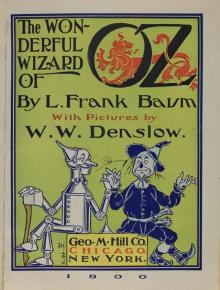 The Wonderful Wizard of Oz
The Wonderful Wizard of Oz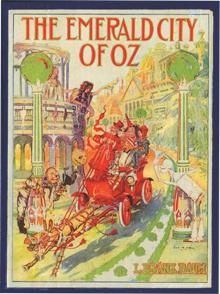 The Emerald City of Oz
The Emerald City of Oz The Story of Peter Pan, Retold from the fairy play by Sir James Barrie
The Story of Peter Pan, Retold from the fairy play by Sir James Barrie Sky Island
Sky Island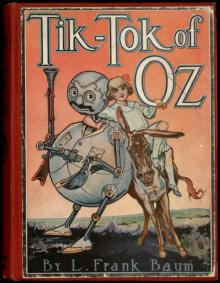 Tik-Tok of Oz
Tik-Tok of Oz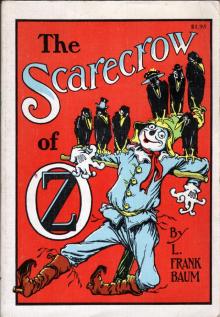 The Scarecrow of Oz
The Scarecrow of Oz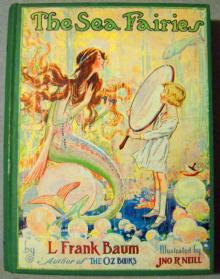 The Sea Fairies
The Sea Fairies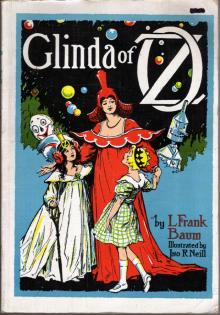 Glinda of Oz
Glinda of Oz The Lost Princess of Oz
The Lost Princess of Oz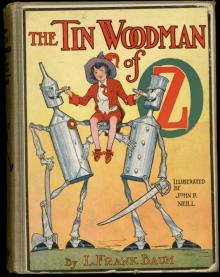 The Tin Woodman of Oz
The Tin Woodman of Oz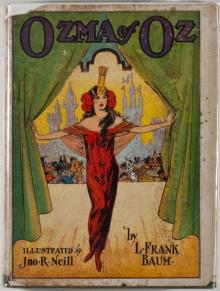 Ozma of Oz
Ozma of Oz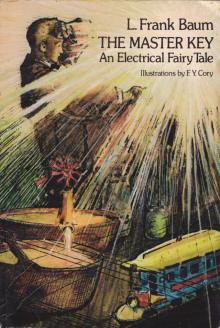 The Master Key
The Master Key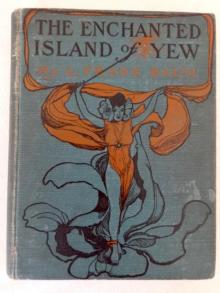 The Enchanted Island of Yew
The Enchanted Island of Yew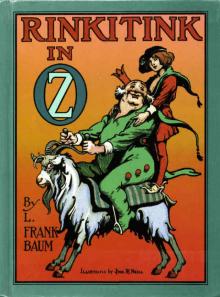 Rinkitink in Oz
Rinkitink in Oz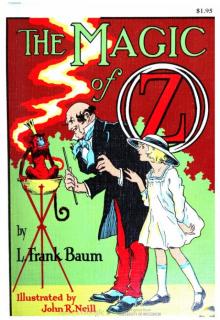 The Magic of Oz
The Magic of Oz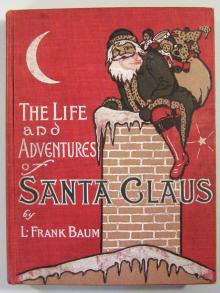 The Life and Adventures of Santa Claus
The Life and Adventures of Santa Claus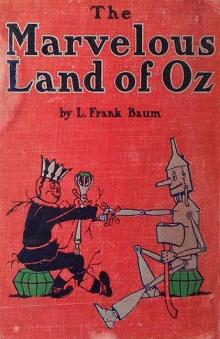 The Marvelous Land of Oz
The Marvelous Land of Oz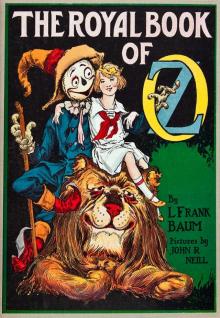 The Royal Book of Oz
The Royal Book of Oz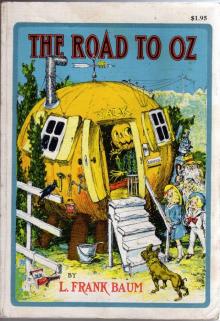 The Road to Oz
The Road to Oz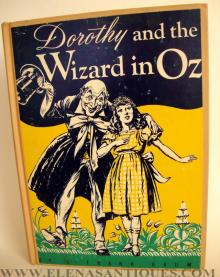 Dorothy and the Wizard in Oz
Dorothy and the Wizard in Oz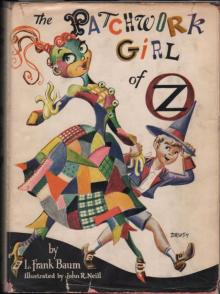 The Patchwork Girl of Oz
The Patchwork Girl of Oz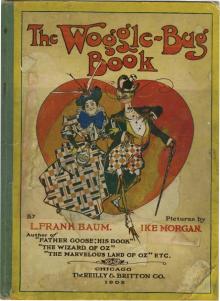 The Woggle-Bug Book
The Woggle-Bug Book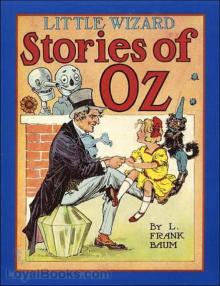 Little Wizard Stories of Oz
Little Wizard Stories of Oz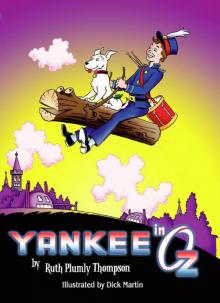 Yankee in Oz
Yankee in Oz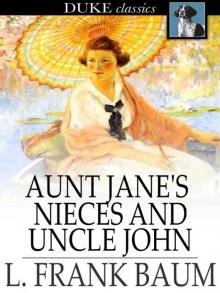 Aunt Jane's Nieces and Uncle John
Aunt Jane's Nieces and Uncle John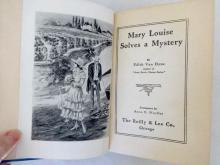 Mary Louise
Mary Louise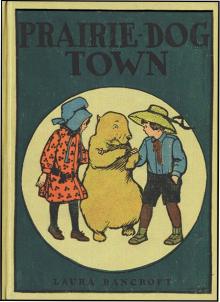 Prairie-Dog Town
Prairie-Dog Town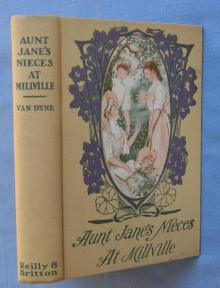 Aunt Jane's Nieces at Millville
Aunt Jane's Nieces at Millville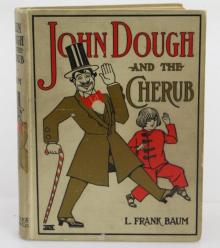 John Dough and the Cherub
John Dough and the Cherub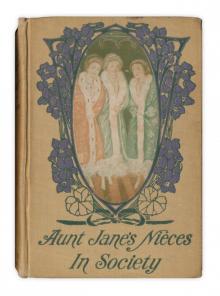 Aunt Jane's Nieces in Society
Aunt Jane's Nieces in Society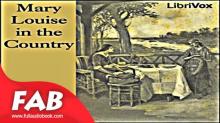 Mary Louise in the Country
Mary Louise in the Country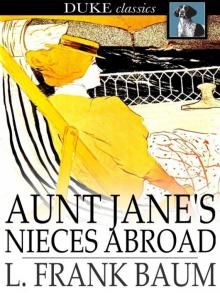 Aunt Jane's Nieces Abroad
Aunt Jane's Nieces Abroad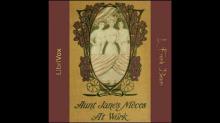 Aunt Jane's Nieces at Work
Aunt Jane's Nieces at Work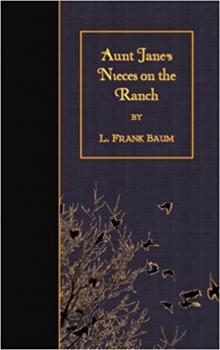 Aunt Jane's Nieces on the Ranch
Aunt Jane's Nieces on the Ranch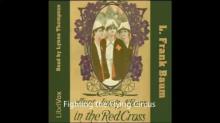 Aunt Jane's Nieces in the Red Cross
Aunt Jane's Nieces in the Red Cross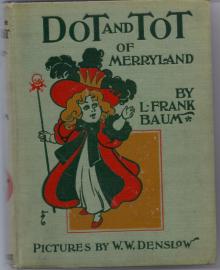 Dot and Tot of Merryland
Dot and Tot of Merryland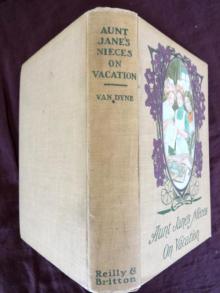 Aunt Jane's Nieces on Vacation
Aunt Jane's Nieces on Vacation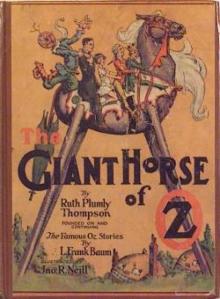 The Giant Horse Of Oz
The Giant Horse Of Oz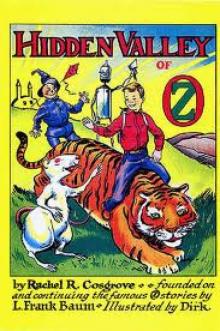 The Hidden Valley of Oz
The Hidden Valley of Oz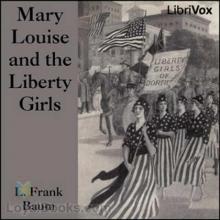 Mary Louise and the Liberty Girls
Mary Louise and the Liberty Girls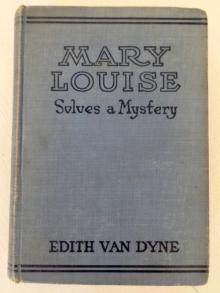 Mary Louise Solves a Mystery
Mary Louise Solves a Mystery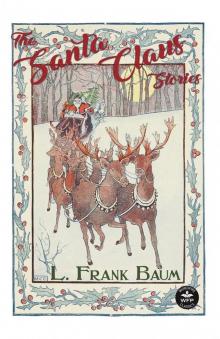 The Santa Claus Stories
The Santa Claus Stories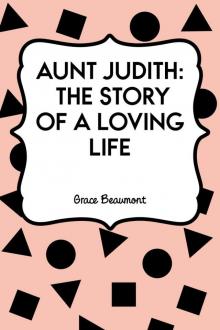 Aunt Judith: The Story of a Loving Life
Aunt Judith: The Story of a Loving Life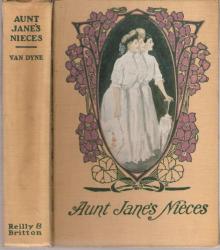 Aunt Jane's Nieces
Aunt Jane's Nieces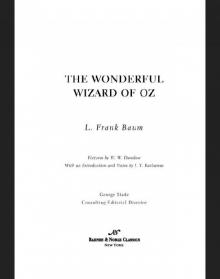 Wonderful Wizard of Oz (Barnes & Noble Classics Series)
Wonderful Wizard of Oz (Barnes & Noble Classics Series)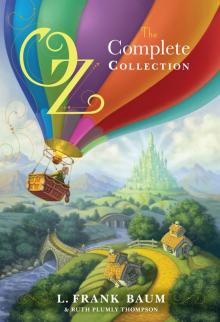 Oz, The Complete Collection
Oz, The Complete Collection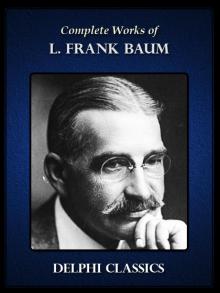 Complete Works of L. Frank Baum
Complete Works of L. Frank Baum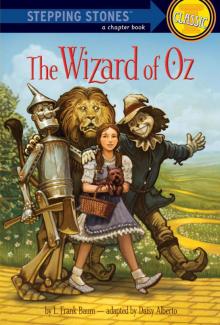 The Wizard of Oz
The Wizard of Oz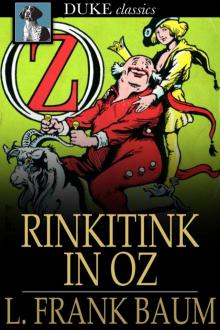 Oz 10 - Rinkitink in Oz
Oz 10 - Rinkitink in Oz